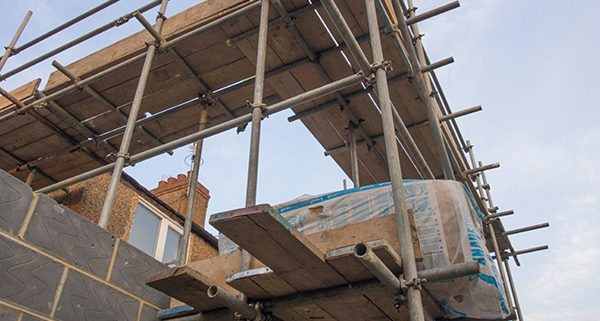When Should Scaffolding Be Inspected?
Health and safety is paramount in construction and scaffold erectors have a duty to provide a safe place for their employees to work. With this in mind, it’s imperative that scaffolding is checked regularly to ensure that it meets the required safety standards. So, how often should scaffolding be inspected?
According to the Work at Height Regulations 2005, a competent person must inspect your scaffolding:
- After installation, and again if the scaffolding is reconfigured into a different position.
- At least weekly. Nobody should use the scaffolding if it hasn’t been checked in the last 7 days.
- After “exceptional circumstances” which could affect the scaffolding’s safety – for example, high winds or an earthquake.
You should keep a record of all your inspections on site while the work is taking place and store these records safely in an office for at least 3 months after the project is completed.
Who should inspect your scaffolding?
Inspecting scaffolding for safety issues is a specialist job, so it can’t be done by just anyone. Guidance from the Health and Safety Executive (HSE) specifies that a scaffold inspection should be carried out by a competent person with knowledge, training and experience. This will usually be a person who is a scaffolder themselves, but it could be a non-scaffolder with the requisite knowledge, such as a site manager. Most scaffold inspectors hold a Construction Industry Scaffolders Record Scheme (CISRS) qualification to demonstrate their competence.
Site inspectors will be thoroughly versed in all the required standards, with full knowledge of issues such as how far scaffold can be from a building and how high it can be. They’ll know what to look for to ensure that the scaffolding is stable, safe and secure.
What should be checked in a scaffold inspection?
Working at height represents a real and serious risk to workers – falling from a height can cause severe injuries and can even be fatal. So there are exacting standards that cover the equipment and how it is installed. You could be fined if your scaffolding does not meet the required safety standards.
The scaffold inspector will check to ensure that all aspects of the scaffolding are safe, looking for signs of damage or incorrect installation. They should check all components of the scaffolding, including:
- Scaffold boards
- Footings
- Standards
- Ledgers
- Bracing
- Putlogs and transoms
- Couplings, bridles and ties
- Guardrails
- Ladders
When your scaffold is inspected, the inspector will usually record that everything is safe. If there’s something that is unsafe, they will record the necessary actions to make it safe. If this is the case, nobody must use the scaffolding until this action has been carried out.
Scaffolding equipment you can rely on
At Gilray Plant, we’ve been selling wholesale scaffolding equipment for over 50 years. Contact us for information about the scaffold products and accessories we offer.
![SP Gilray_navy [R] SP Gilray - Gilray Plant](https://gilray.co.uk/wp-content/uploads/2025/06/SP-Gilray_navy-R.png)


